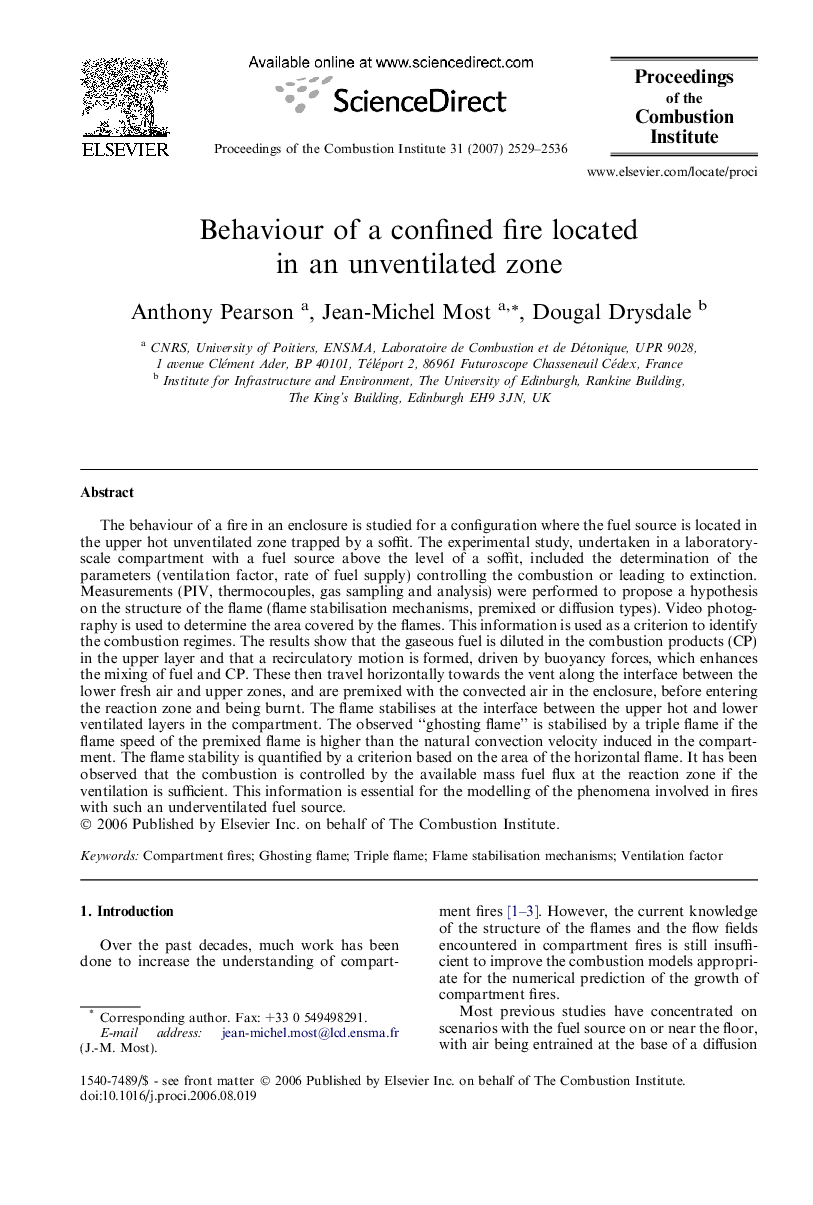| Article ID | Journal | Published Year | Pages | File Type |
|---|---|---|---|---|
| 241305 | Proceedings of the Combustion Institute | 2007 | 8 Pages |
The behaviour of a fire in an enclosure is studied for a configuration where the fuel source is located in the upper hot unventilated zone trapped by a soffit. The experimental study, undertaken in a laboratory-scale compartment with a fuel source above the level of a soffit, included the determination of the parameters (ventilation factor, rate of fuel supply) controlling the combustion or leading to extinction. Measurements (PIV, thermocouples, gas sampling and analysis) were performed to propose a hypothesis on the structure of the flame (flame stabilisation mechanisms, premixed or diffusion types). Video photography is used to determine the area covered by the flames. This information is used as a criterion to identify the combustion regimes. The results show that the gaseous fuel is diluted in the combustion products (CP) in the upper layer and that a recirculatory motion is formed, driven by buoyancy forces, which enhances the mixing of fuel and CP. These then travel horizontally towards the vent along the interface between the lower fresh air and upper zones, and are premixed with the convected air in the enclosure, before entering the reaction zone and being burnt. The flame stabilises at the interface between the upper hot and lower ventilated layers in the compartment. The observed “ghosting flame” is stabilised by a triple flame if the flame speed of the premixed flame is higher than the natural convection velocity induced in the compartment. The flame stability is quantified by a criterion based on the area of the horizontal flame. It has been observed that the combustion is controlled by the available mass fuel flux at the reaction zone if the ventilation is sufficient. This information is essential for the modelling of the phenomena involved in fires with such an underventilated fuel source.
